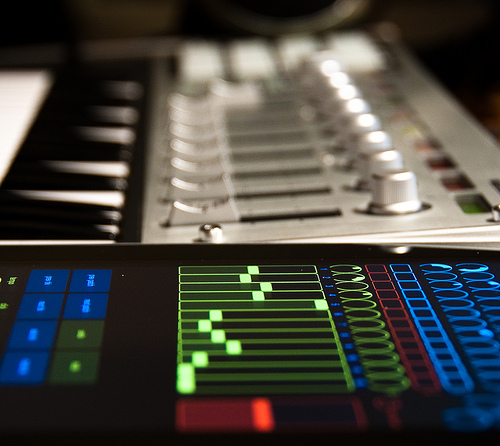2013 was a very big year for me.
From MTEC in Melbourne, a Sydney Opera House concert with The famous Mrs Karen Carey, the publishing of a new line of iBooks, Skype calls with Michael Price (Sherlock) & John Hunter (Fantastic Flying Books), IB Diploma training in Singapore, learning Ableton Live thanks to Liveschool, presentations on everything Music Technology and iPads, Australian Music Day with Daniel Rojas, Mathew Hindson, Ross Edwards and Paul Stanhope – not to mention Mavericks coming out – and now song-writing collaborative plans with Olivia Broadfield, new iBooks and a brand new website!
I realise my blog has been neglected, however the plan is to divide the older posts from the newer ones and to create a new set of work-samples under the Portfolios heading. These will consist of major units of work or events that have resources for everyone.
The other sub-divisions (Arrangements, Orff Schulwerk, Interactive) will consist of PDFs and links to downloadable materials as well as a brand new venture undertaken by Laura Wright for schools developing their own iBooks. Check out wrightstuffinteractive for more details.
What is in store for 2014?
Keep a look out for the following in January!
• Soundcloud links to Creative Common music composed by myself and my students
• iBooks made for music education
• Orff & Kodaly lessons that integrate technology
• iPad app reviews and lessons
• Ableton Live & Reason 7 packs
• Collaborations with Film, TV and Game composers
I leave you for the time being with a great lesson I conducted with over 100 adults all on iPads.
An Ideal of Hope for iPad
I was asked to present on iPads in Music Education at the annual AIS ICT Integrators Conference in October of 2013. Not only were the participants from other subject areas but they all had a collection of iPhone, iPad, or Andriod devices. My job was to teach a piece of music that they could all perform in under 30 minutes. I went to straight to Hans Zimmer.
Hans Zimmer’s score of The Man of Steel is impressive in its use of complementary rhythms (the way rhythmic patterns overlap without getting in the way of each other). His use of rhythmic layers and then the thematic material was an ‘ideal’ starting point for my presentation. Just like in my classroom I began by using movement and rhyme to teach the main Taiko like ostinato (fig 1.1).
From there I asked participants to use the apps I had listed earlier in the handout to perform each part as we rehearsed it through rhyme, body percussion and imitation. Once we had the main layers down I introduced the melodic and harmonic material through solfege singing and imitation (the key was that everyone had to learn each part. This way the performance comes together as a whole).
By adding humorous and related text to each part I had everyone engaged and involved.
Fantastic. Fun and Engaging. I am looking forward to using this concept in my classroom…
Now Hans Zimmer in this Scoring Video hired twelve of the best drummers to lay down grooves and ostinatos for the film. We didn’t match their textural accuracy but we came pretty close.
Great ideas! I took a lot away from this for my own lessons…
I really enjoyed how involved everyone was and how much they got into the performance once I had taught all the parts. Some even differentiated their own learning by attempting the more advanced parts and this made the performance. Just like a normal classroom!
You can find my lesson with all the notation methods here on Slideshare, or via the embedded publication below.
If you have any of your own please share in the comments!


